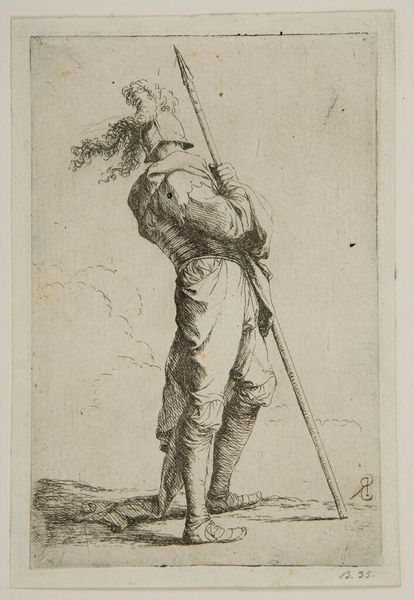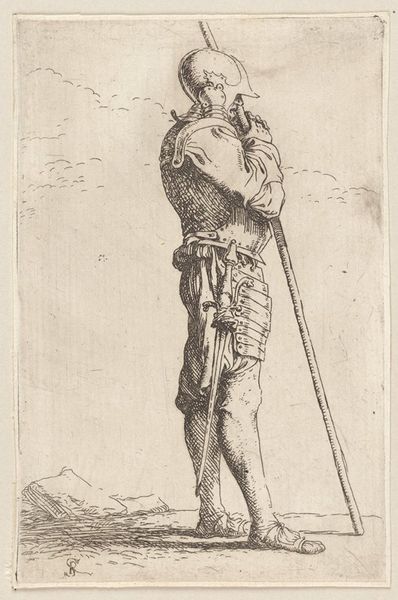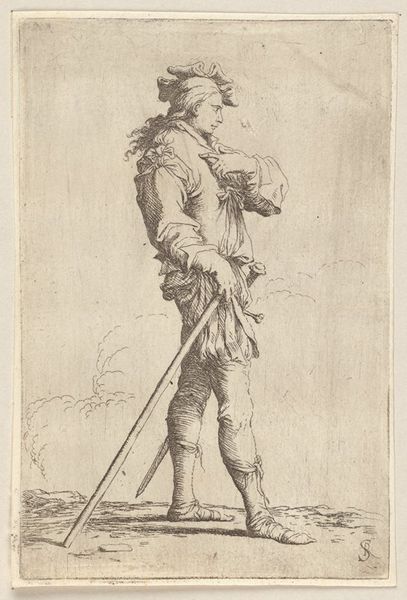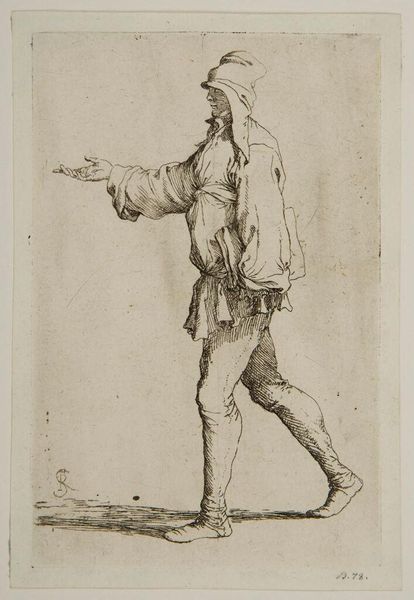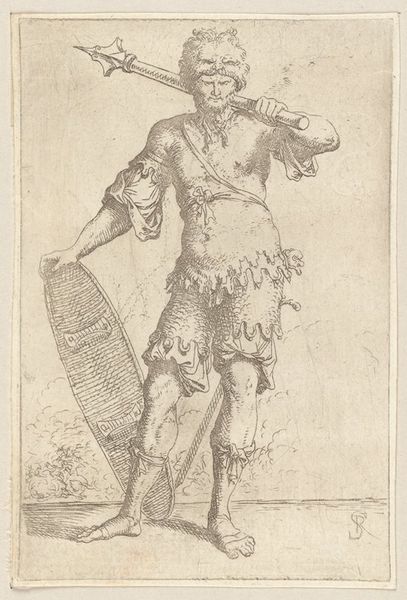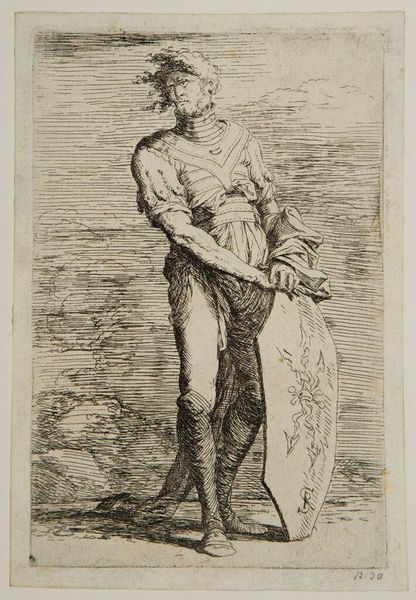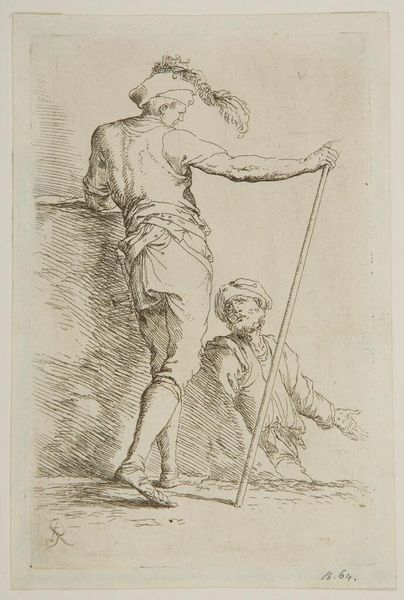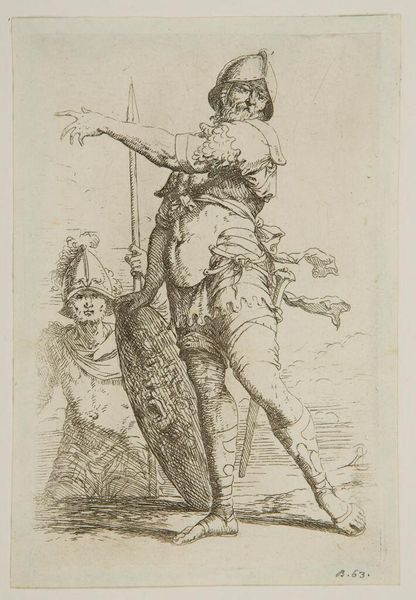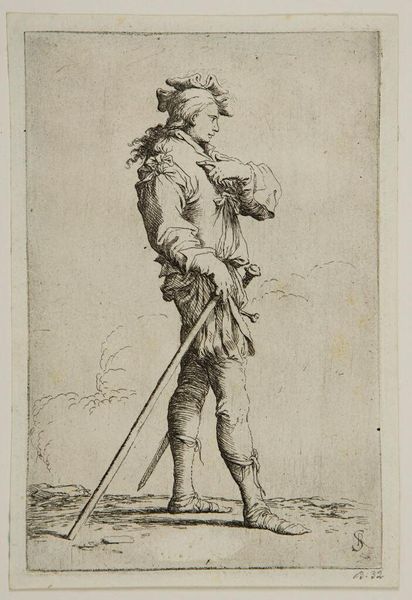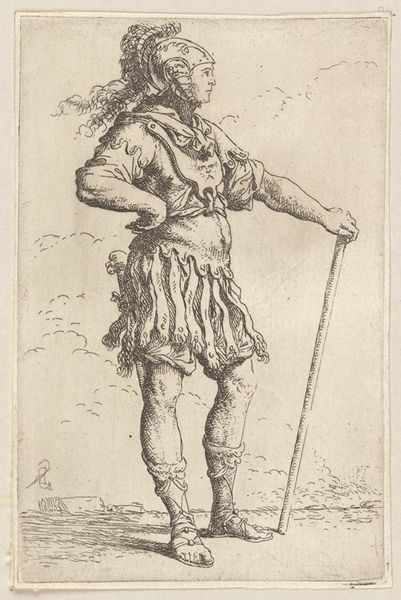
drawing, print, etching
#
portrait
#
drawing
#
baroque
# print
#
etching
#
figuration
#
history-painting
Copyright: Public Domain: Artvee
This etching of a soldier was made by Salvator Rosa in the 17th century. As an etching, the image is created by drawing into a waxy ground with a sharp needle, then exposing the plate to acid, which bites away the lines. This is a printmaking process capable of capturing fine detail, as you can see in the soldier's musculature and the folds of his clothing. Consider the labor involved: not just Rosa's artistic skill, but the unseen work of preparing the copper plate, mixing the acid, and running the press. Etchings like this were often made in multiples, so it's important to think of it as a reproducible commodity, connecting artistic vision with the realities of production and consumption in Rosa's time. Paying attention to these material and social dimensions helps us move beyond traditional art history. It shows the amount of work that was involved in the process of creating art. It challenges the distinctions between high art and craft by emphasizing the importance of production in understanding the full meaning of an artwork.
Comments
No comments
Be the first to comment and join the conversation on the ultimate creative platform.

